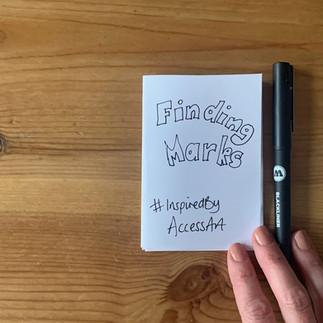Zines
- nickiregart
- Oct 28, 2021
- 3 min read
Updated: Nov 1, 2021
#inspiredby AccessArt
After attending a few online courses ran by AccessArt, I was really inspired to teach the techniques of discovering marks and zine books. (Thank you AccessArt!)

Zine (pronounced as zeen) is short for magazine and it's a homemade publication. What makes zines very special is that the creator can base it on any subject they like, stylised in they way they want it. For school or home, zines can be used for a range of activities: stories, sketching, journals, news, fashion, a school topic, recipes,travel....the list is endless. More importantly, a zine is a precious and special publication to the person creating it. As it is a publication material, the completed zine can be photocopied, cut and folded to produce a specific amount of zines, which then can be given (or sold) to others.
Recently, working with Year 4, I decided to introduce the students to zines as an end of topic activity to develop drawing skills. With the link of #inktober and the inspiration of 'Zines' and 'Finding Marks' from AccessArt, I combined these activities with the making of a zine.
First, the students looked at various drawings and talked about marks found in them and how they were created through different pencils/pens, pressures and movements. I asked them to recreate the marks in a zine, so they could have access to them in future works. So, the tricky bit was to teach them how to make a zine. I demonstrated each stage slowly and supported those who needed it with the magical fold at the end (even I had to think about it!).
The students created a title page in their own style and then drew a straight line on each page through the middle, to create two sections per page. In each of these, they drew the marks they observed, using a range of pen thicknesses, making sure each section was demonstrating one type of mark. The students (notably the boys) were very engrossed in the task, investigating different types of marks. Once complete, they were very eager to share their findings with others.
In the second lesson, I talked about the history of Inktober and the reason why people take part in the annual event. To give the students a visual element, I showed images and videos of artists' drawings, talking about the range of marks they use and how the artist has cleverly incorporated the daily theme into their drawing, such as sour, roof or helmet.
The students created another zine and were give a theme for each page to draw using different thicknesses of pens. The themes were related to the topic and the school principles.
After the lesson, I had many students wanting to make a zine to play around with drawings at home, with some of them showing me the next day what they had created. Zines are a great hook, so if you get the chance at school or at home, I would highly recommend making a zine, as it is so engaging and fun to do....and of course, you can theme it on whatever you want!
Here is how you make a zine:
1: Select an A4 piece of paper. The paper can be anything: plain, coloured, patterned, etc.
2: In a landscape position, fold the paper in half. Then open the paper out.
3: Fold the paper in half like a book (A5 size).
4:Open the paper out and fold each side in so they meet in the middle, like a double door.
5: Open the paper out. The folds should have created eight rectangles.
6: Fold the paper back in half, like a book.
7: Starting from the folded side, cut from the middle along a fold line, up to where the crease first crosses over.
8: Open the paper back out. You should have a cut in the middle of the paper which is the width of two folded rectangles.
9: Here is the tricky bit...holding the paper either side of the cut on the fold, squish it so it pops out to form a 3-D add sign.
10: Fold it to create the zine.
To see how to do this visually, download free PDFs on my Teaching Resources page of how to make a zine.
Note: This is not an ad, I just love AccessArt and I would highly recommend checking them out if you haven't done so already. As a member, they are a fantastic community, full of arty ideas and resources.


























Comments